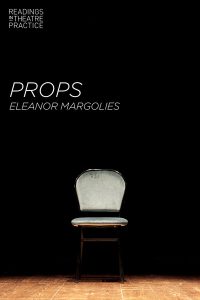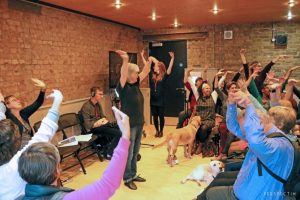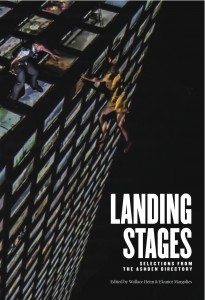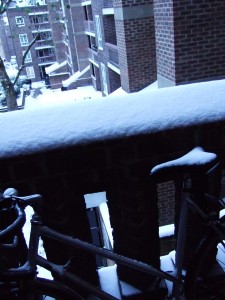This paper was written for an international gathering of editors of puppet magazines to celebrate the centenary of the Czech puppet magazine Loutkár. The gathering was organized by Nina Maliková and held at the puppet museum in Pilsen (Muzeum Loutek Plzen) as part of the Skupa’s Pilsen festival in June 2012. It was first published in Loutkár.
The theme of the gathering was the future of publishing on puppetry, so I began with a thumbnail sketch of the history of puppetry journalism in Britain and then talked about the interplay of print and digital publishing.
Anyone publishing on puppets in English must first doff their hat to Edward Gordon Craig, who published The Marionette every month for a year between 1918 and 1919. The journal was published in Florence, where Craig was living, because he found England unresponsive to his ideas. As with his journal The Mask (published between 1908 and 29), Craig was publisher, editor, author and illustrator, often writing all the articles under pseudonyms such as ‘Tom Fool’.
Since then, membership organisations have been responsible for most British publications on puppetry. Puppet Post, a very lively little journal specialising in puppetry training and its use in education and therapy, was published by the Educational Puppet Association from 1946 to the 1970s. The Puppet Master, published by the British Puppet and Model Theatre Guild, was launched in January 1946 and continues to this day as an annual publication. British UNIMA published the BrUNIMA Bulletin from 1964 to 2003, and has since 2004 published Puppet Notebook magazine.
Alongside the membership organisations, the Puppet Centre Trust has been active in promoting critical writing on puppetry. Animations magazine was published from 1977 to 2000. In 2002, the magazine was reinvented for the web as Animations Online and supplemented by Animations in Print – a substantial annual review of puppetry featuring high quality photography.
Some of the most informed writing on puppetry in performance can be found in Total Theatre, a magazine which covers a whole gamut of performance: ‘physical and devised theatre, visual performance, live art, street arts, circus, mime, mask, new writing, cabaret & burlesque, dance-theatre and puppet theatre’. Reviews are quickly posted online, while longer features appear in the quarterly print magazine. [Since this was written, Total Theatre has published its last print copy and is now entirely online.]
While Puppet Notebook will continue as a print magazine, we plan to make future and back issues available online, through a searchable archive of individual articles on our website, and by uploading issues to www.issuu.com.
So why publish in paper and ink?
Paper is cheap and can travel without electricity. Paper can bypass official channels and can survive censorship and power cuts. It can be preserved in libraries for centuries while new technologies come and go. It can be read in the bath or on the bus or under the bedcovers. In the Edward Gordon Craig archive in the Bibliothèque Nationale there is a newspaper clipping on which he scribbled his disagreements with the author of the article, querying dates, facts and interpretation and even adding a caricature of himself. Digital publishing struggles to reproduce the convenience and resilience of paper.
A puppeteer told me that her copy of a recent issue of Puppet Notebook was covered in glue and paint. The issue which she’d left open on her workbench featured papier mâché recipes by the Canadian puppeteer Ronnie Burkett. He is a great advocate of choosing materials for puppet-making according to their properties, without regard to fashion. Plastics may offer some advantages over paper but, he says, ‘there is great liberation in not having to create through a ventilation mask.’ Despite the enormous benefits of the digital, there can be great liberation in reading away from the screen.
The links between paper publications and puppetry are more than accidental. By tradition, the birthdate of Britain’s iconic puppet, Mister Punch, is taken from an entry Samuel Pepys made in his diary on 9 May 1662: Thence to see an Italian puppet play …which is very pretty, the best that ever I saw. The period in which Pulcinella arrived in Britain, 350 years ago, was also the age which saw a flowering of cheap, ephemeral publications: chapbooks, satirical verses, broadsheet ballads. There are parallels between this form of publishing and the popular puppetry of the period: both were nimble forms that helped news and ideas to travel quickly, making use of generic forms and characters. Just as new words would be set to an old tune and sold as printed broadsheets, ancient puppet characters were used to depict and satirize contemporary figures.
The current popularity of silhouettes (see for example, Pangolin’s Teatime, Matthew Robins and The Paper Cinema) is not just nostalgic. These apparently outdated techniques – black and white rather than colour, stills rather than moving images – allow us to daydream. They set the imagination alight in a different way from the saturated colour, high speed and high definition of computer-generated images. In shows like Lion King and War Horse, puppets (as well as masks, costumes and make up) are the vectors of the perfectly reproducible theatrical image, making it possible to perform identical shows all over the world. Performances with paper are an important counter-trend to this type of theatrical franchising. In a similar way, print in all its forms – leaflets, flyers, fanzines, magazines and journals – can offer not only a cheap and informal means of communication but also a moment of slowness and stillness, something to which the reader can return.
The thrill of unlimited space
In Total Theatre magazine puppetry is judged primarily on its theatrical effect rather than as a specialist technique. In contrast, reviews in newspapers still seem to express wonder at the very fact of puppetry, regardless of its execution or dramaturgical function. This can partly be blamed on the limited space allowed for reviews, even in the serious newspapers. In a recent memoir of his reviewing life, critic Irving Wardle writes,
when it comes to sifting through the memories and seeing what comes out on top, it is mostly what actors and directors have done, not what playwrights do; which makes me see how much I involuntarily suppressed to fulfil the prevailing expectation of reviewing as a garbled form of news. When it comes to describing actors, things were pretty bad 40 years ago. Since then the length allotted to reviews has shrunk so much that description has all but vanished. If you think of what George Bernard Shaw did in that department a century ago, or William Hazlitt a century before him, this is a serious loss.
Puppetry, like acting and scenography, suffers particularly from the contraction of the space available for description and discussion. To identify what is happening visually in performance and to discriminate between different kinds of work, takes time and space. We can receive a great deal of complex visual information ‘in a flash’, without verbalising a response. Understanding its impact takes much longer.
If newspapers are impossibly constrained, what about the explosion of theatre bloggers? A show at a small fringe theatre with a good publicity team can attract dozens of online reviews, but these are not necessarily more thoughtful or informed than their print equivalents. However, the infinitely expandable online space is being used in some more imaginative ways. Critic (and blogger) Maddy Costa writes of the response to a recent controversial production:
Read the online reviews and you realise that no one says quite the same thing: one is struck by the gaze of the actors, another flags up the smells in the text, a third celebrates the humour of the piece, and so on. In other words, the ‘excess’ that exasperates critics required to distil [the production] down to a brief 500-word review is inspiring and thrilling to writers with unlimited space in which to tease out its complexities.
As a critic, Costa is exploring new models of the relationship between critic and theatre-maker. She has experimented with confessing her own partiality for one company over another, documenting rehearsal processes and writing ‘embedded criticism’ and, with Jake Orr, has set up Dialogue, a new forum allowing critics and theatre-makers to meet and work together.
There are important considerations when it comes to adopting digital technology: new responsibilities around making sure online publications are archived in durable form, and disseminating ideas as freely and widely as possible. But there need be no conflict between digital and print – there can be much cross-fertilisation.
Perhaps a more significant divide now is between the ‘tweet’ and the ‘periodical’. While impromptu chirps on Twitter – ‘go see this’ and ‘I hated that’ – are energising and can lead to genuine conversations, the act of publishing at regular intervals in time has a distinct value. It always involves stocktaking, gathering ideas and texts, and sifting to identify themes and gaps. These days, it is all too easy to pour one’s energy into quick responses instead of slow thought: ‘I feel like my brain is frying’, Maddy Costa writes, considering the volume of tweets, blog posts and comments produced over ten days in response to just one production; she hopes vainly that someone will collate and organise all the critical responses. Periodical publications (whatever the medium they adopt) are a means of slower thinking about things.





